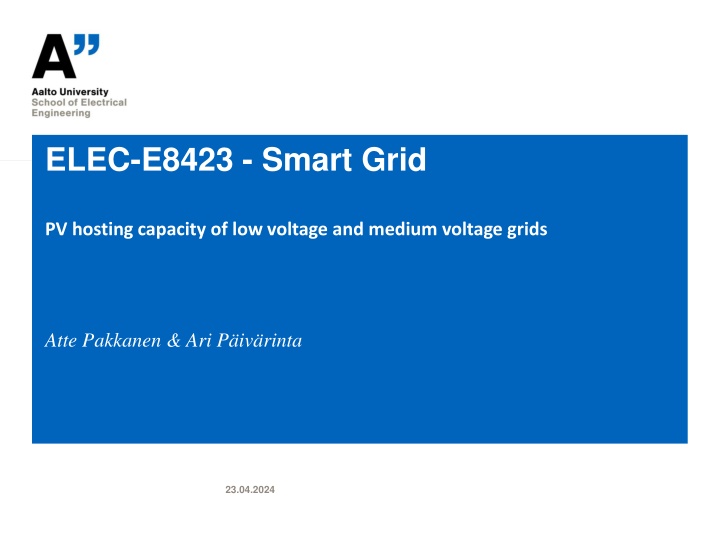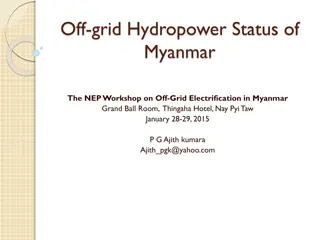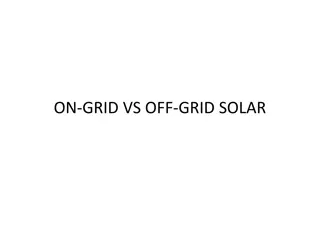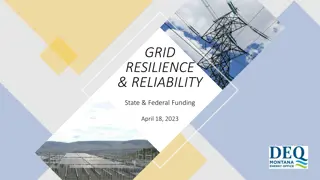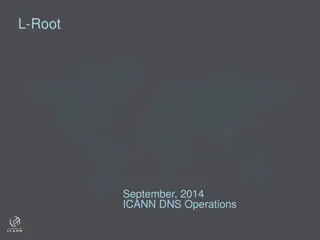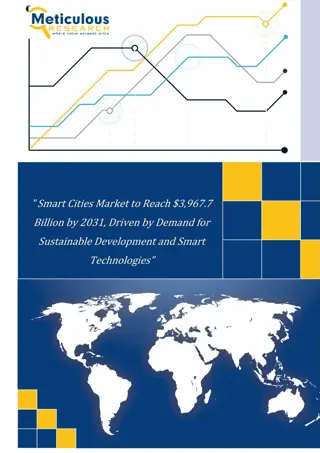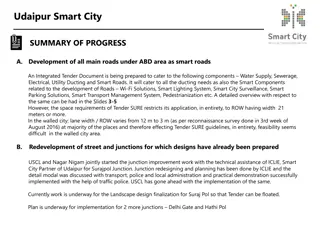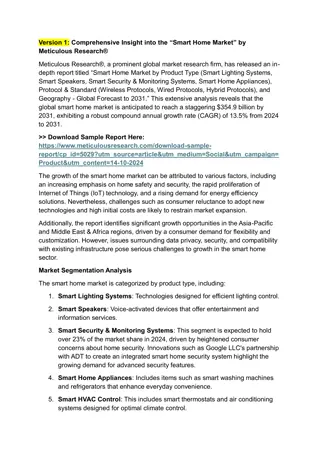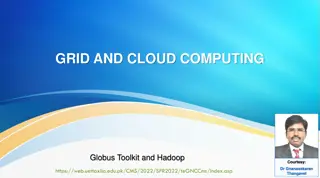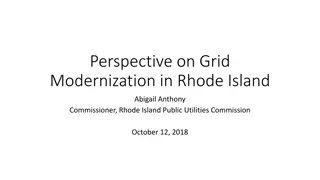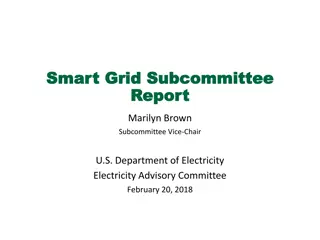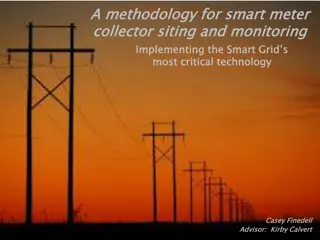Smart Grid PV Hosting Capacity Analysis
This presentation delves into the impact of distributed photovoltaic generation on transmission grids, focusing on concepts like hosting capacity, grid voltage levels, policies, tools for measurement, and technological advancements. It explores the challenges and considerations surrounding integrating solar power into existing grid infrastructures.
Download Presentation

Please find below an Image/Link to download the presentation.
The content on the website is provided AS IS for your information and personal use only. It may not be sold, licensed, or shared on other websites without obtaining consent from the author.If you encounter any issues during the download, it is possible that the publisher has removed the file from their server.
You are allowed to download the files provided on this website for personal or commercial use, subject to the condition that they are used lawfully. All files are the property of their respective owners.
The content on the website is provided AS IS for your information and personal use only. It may not be sold, licensed, or shared on other websites without obtaining consent from the author.
E N D
Presentation Transcript
ELEC-E8423 - Smart Grid PV hosting capacity of low voltage and medium voltage grids Atte Pakkanen & Ari P iv rinta 23.04.2024
Introduction Photovoltaics are an important part of future decarbonization of energy production and a major part of production is going to be integrated into built environment. Presentation examines the impact that the growing distributed photovoltaic generation can have on the transmission grid. 1. Introduction 2. What is hosting capacity? 3. Voltage level of the grid. 4. Policy 5. Hosting capacity tools and measurements 6. Technological advances 7. Conclusions 07.02.2018 Page 2
What is hosting capacity? Photovoltaic hosting capacity means the amount of photovoltaic production that can be connected to the transmission grid under certain conditions. Power quality must stay within the limits set for the power customers receive. Limiting technical constraints: Current capacity, voltage rise, voltage unbalance, current unbalance, flicker and harmonic voltages at the point of common coupling. Most important components in regards of current capacity are secondary substation transformers and trunk cable lines. In low voltage systems the limiting factor is (often) the minimum short circuit current instead of current capacity. 07.02.2018 Page 3
Voltage level of the grid Medium voltage systems 1-35 kV low voltage system < 1 kV. Voltage rise can be a limiting factor, especially in rural networks. There is no consensus on maximum acceptable value of voltage rise. Europe +10%, America +5%, Germany +3%. Voltage unbalance can be an issue. The limit provided by European standard (EN50160) is 2% for the negative sequence component. Currently no coordination in Finland how many single-phase PV inverters have been connected to the network. Can lead to overloading the neutral wire. Rare cases flicker or harmonics may cause limitations. 07.02.2018 Page 4
Policy Policies Define Grid Standards: Influence grid compliance and set requirements for PV systems. Financial Incentives Drive Adoption: Feed-in tariffs, tax rebates, and net metering support solar uptake. Regulatory Challenges: Balancing solar integration with grid stability and energy fairness. Case Study Impact: Example from Germany's EEG law shows how specific policies can increase PV deployment. 07.02.2018 Page 5
Hosting capacity tools and measurments Purpose of Tools: Assess maximum solar power input without grid modification. Types of Tools: Includes simulation models, real- time monitoring systems, and analytical software. Key Measurements: Voltage stability, phase balancing, load management, and thermal limits. Improving Measurement Accuracy: Utilizing advanced data analytics, IoT technology, and updated grid simulation methodologies. 07.02.2018 Page 6
Technological advances Technological Enhancements: Smart inverters, grid-responsive storage solutions, and advanced management systems. Regulatory Evolution: Anticipated policy adjustments to support increasing PV penetration. Economic Considerations: Investment in grid resilience and adaptation costs versus benefits. Long-term Strategic Planning: Developing grid infrastructure to handle future renewable capacities, focusing on sustainability and efficiency. 07.02.2018 Page 7
Conclusions PV hosting capacity factors need to be accounted for in the future additions and updates of transmission networks. Effective policies and advanced measurement tools are essential for maximizing the hosting capacity of PV systems in low and medium voltage grids, enabling smoother integration and better management of renewable energy resources. Embracing technological advancements such as smart inverters and energy storage, will be crucial in ensuring that our electrical grids are resilient, efficient, and capable of meeting future energy demands. 07.02.2018 Page 8
Source material used Renewable Energy Sources Act. (2023). https://climate-laws.org/documents/law-for-the-expansion- of-renewable-energies-renewable-energy-sources-act-eeg-2021_bbdd?id=renewable-energy- sources-act-eeg-latest-version-eeg-2022_1b40. Eltigani, D., & Masri, S. (2015). Challenges of integrating renewable energy sources to smart grids: A review. Renewable and Sustainable Energy Reviews, 52, 770-780. Palacios-Garcia, E. J., Moreno-Mu oz, A., Santiago, I., Moreno-Garcia, I. M., & Milan s-Montero, M. I. (2017). PV hosting capacity analysis and enhancement using high resolution stochastic modeling. Energies, 10(10), 1488. Malamaki, K. N. D., & Demoulias, C. S. (2013). Minimization of electrical losses in two-axis tracking pv systems. IEEE transactions on power delivery, 28(4), 2445-2455. Matti Lehtonen et al. On PV hosting capacity of distribution networks. 07.02.2018 Page 9
